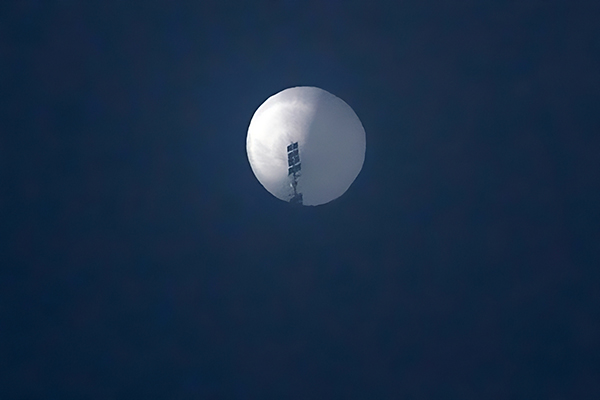The Indian armed forces are drafting a set of basic protocols to deal with newer threats like surveillance balloons or other unidentified objects in the sky after a balloon like object was spotted a year ago over the strategic Andaman and Nicobar Islands.
In January 2023, the US shot down a massive Chinese balloon which is accused of spying on vital military sites with an AIM-9X Sidewinder missile fired from an F-22 fighter jet. China denied the allegations, claiming it was a civilian aircraft used to study weather-related issues. Days later, the US shot down a cylindrical-shaped object over Canada and another unidentified aerial object in its own airspace.
India’s protocols were drafted after an aerial object was spotted over the Andamans, even though its origin could not be determined at the time. According to Bloomberg, the object had drifted away over the ocean before military authorities could decide what action to take.
Spy balloons are high-altitude surveillance equipment used to acquire intelligence and complete other military objectives. They typically fly at 80,000–120,000 feet, much above the cruising altitude of commercial aircraft.
A spy balloon typically has cameras and image equipment dangling beneath the gas-filled white object to record important events. They are able to scan a large area from close range and take more detailed, high-resolution pictures of the target because of their proximity to Earth’s surface.
Balloons are economically feasible, in contrast to satellites. The drawback is that these cannot be directly steered but can be loosely guided by adjusting height to capture different wind currents. They are also a relatively easy target.
The protocols spell out what to do if an unidentified slow-moving aerial object is spotted. This includes detection, positive identification, verification, and targeting using a suitable platform and weapon system. These steps will be followed by detailed photography of the target, a comprehensive report on it, and analysis of any recovered remnants.
The entire operation, from weapon system launch to target destruction, will be photographed and recorded in detail.
A detailed report, including the sighting time, target size, and description recorded on ground radars, will be prepared and communicated through the chain of command.
The primary challenge in such a sighting is detecting and identifying the object. Because balloons are slow moving, satellites and radars cannot detect them.
Several radars at key military sites in India are being upgraded to detect such aerial objects.
Even the United States, which possesses the most sophisticated military equipment, had previously failed to detect the slow-moving Chinese balloons.
The Andaman and Nicobar Islands (ANI) are a group of 572 islands in the Indian Ocean, located in the south-eastern part of the Bay of Bengal. The tri-service Andaman and Nicobar military command is based on the Andaman and Nicobar Islands. The proximity of these islands to the Indo-Pacific as well as major choke-points or sea lines of communication (SLOC) in the Bay of Bengal — the Malacca Strait, Sunda Strait, Lombok Strait, and the Ombai-Wetar straits — makes them strategically important. The majority of global shipping traffic passes through these choke points.
The islands have the potential to help India increase its influence in the Indian Ocean region and support its military operations there. The strategic location of the Andaman and Nicobar Islands is acknowledged by India’s key maritime partners, including the United States, Japan, Australia, and France. These islands not only provide India with important maritime space, but they also have significant strategic and military implications for the Indian Ocean region.













